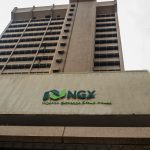
Should the Federal Reserve cut rates in December, it’ll be based on market pressure—not sound economic reasoning—and there will be no rate cuts in the first half of 2025.
This is the prediction – and warning – from one of the world’s largest independent financial advisory and asset management organizations.
The caution from Nigel Green, CEO of deVere Group, comes as the US Consumer Price Index registered a 2.7% 12-month inflation rate for November, up slightly from October. Core CPI remains elevated at 3.3%, signaling that underlying inflationary pressures are far from subdued.
Meanwhile, the job market remains robust, adding another layer of complexity to the Fed’s decision-making process.
“If the Fed delivers a rate cut next month, it will only be to appease market expectations,” says Nigel Green.
“The data, however, paints a different picture. Inflation is staging a comeback, and it’s stubborn. The Fed knows it cannot afford to cut rates while prices are climbing and the job market remains resilient.”
The resurgence of inflation complicates the economic landscape.
While some market observers continue to anticipate monetary easing, deVere argues that policymakers will adopt a more cautious stance. “Slashing rates prematurely would risk reigniting inflationary pressures that could destabilize the economy in the longer term,” notes the deVere CEO.
Adding further complexity is the economic agenda of President-elect Trump. His policies—centered on tax cuts, deregulation, and significant spending—are designed to supercharge growth. Yet, these measures could inadvertently stoke inflationary fires.
“Trump’s growth-focused policies might deliver short-term momentum, but they also come with the risk of heightened inflation,” continues Nigel Green.
“If this happens, as we expect, the Fed will have no choice but to keep rates elevated for an extended period.”
For investors, this evolving reality serves as a wake-up call. Markets must now adapt to a world where inflation is a central concern and monetary policy is less accommodating.
“Investors need to rethink their strategies,” he says. “Bonds, for example, could offer considerable value in an environment marked by persistent inflation and higher interest rates.”
The return of inflation underscores the need for vigilance and adaptability. Elevated price pressures are reshaping investment priorities, pushing both individuals and institutions toward assets that offer stability and long-term value. This new paradigm is one that cannot be ignored by serious investors.
“Make no mistake: inflation remains a formidable threat,” concludes Green.
“Neither the Federal Reserve nor financial markets can afford to underestimate its potential impact. Investors must prepare for volatility, adjust their strategies, and focus on assets that can withstand the pressures of a rapidly evolving economic landscape.”












